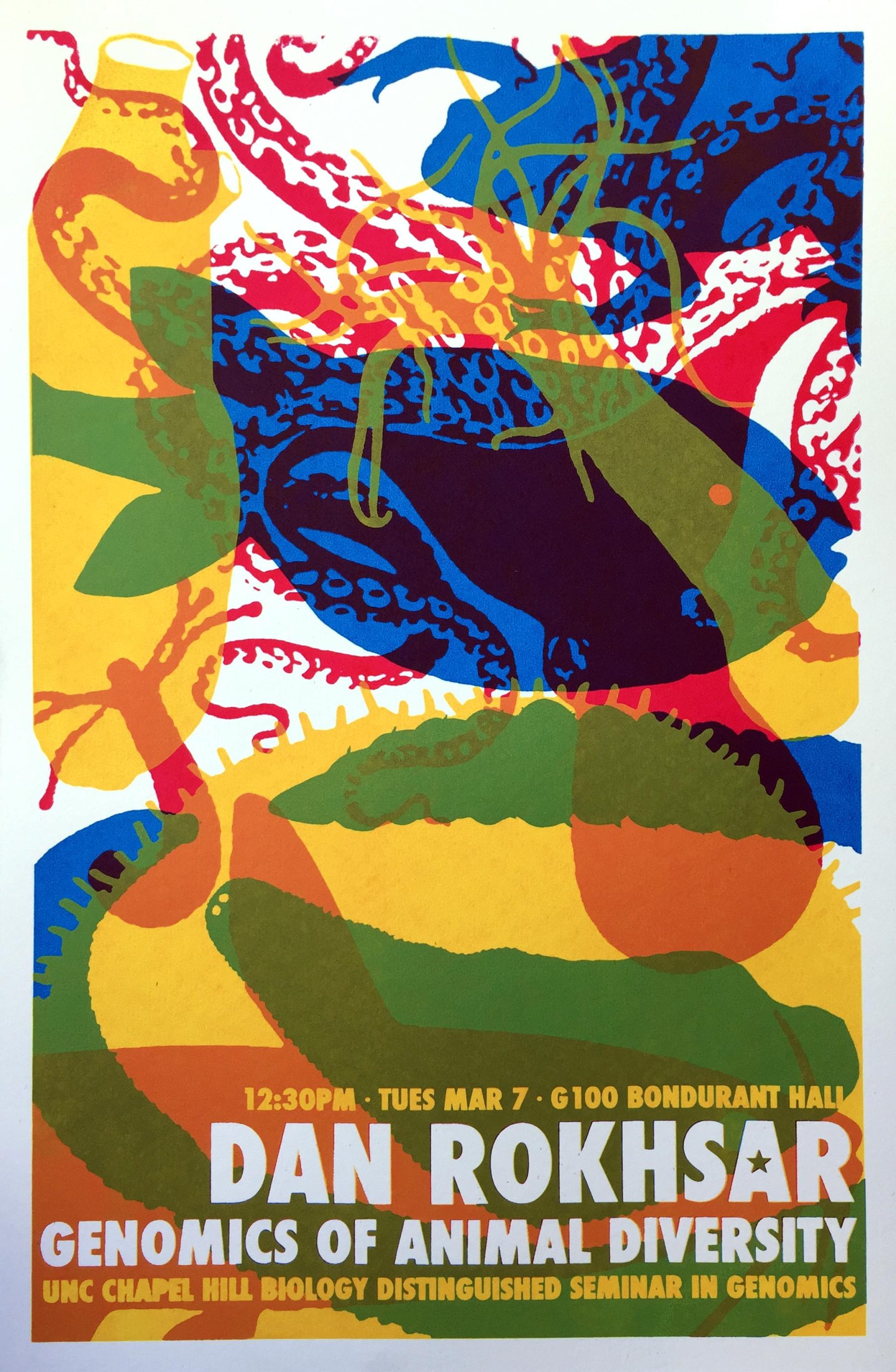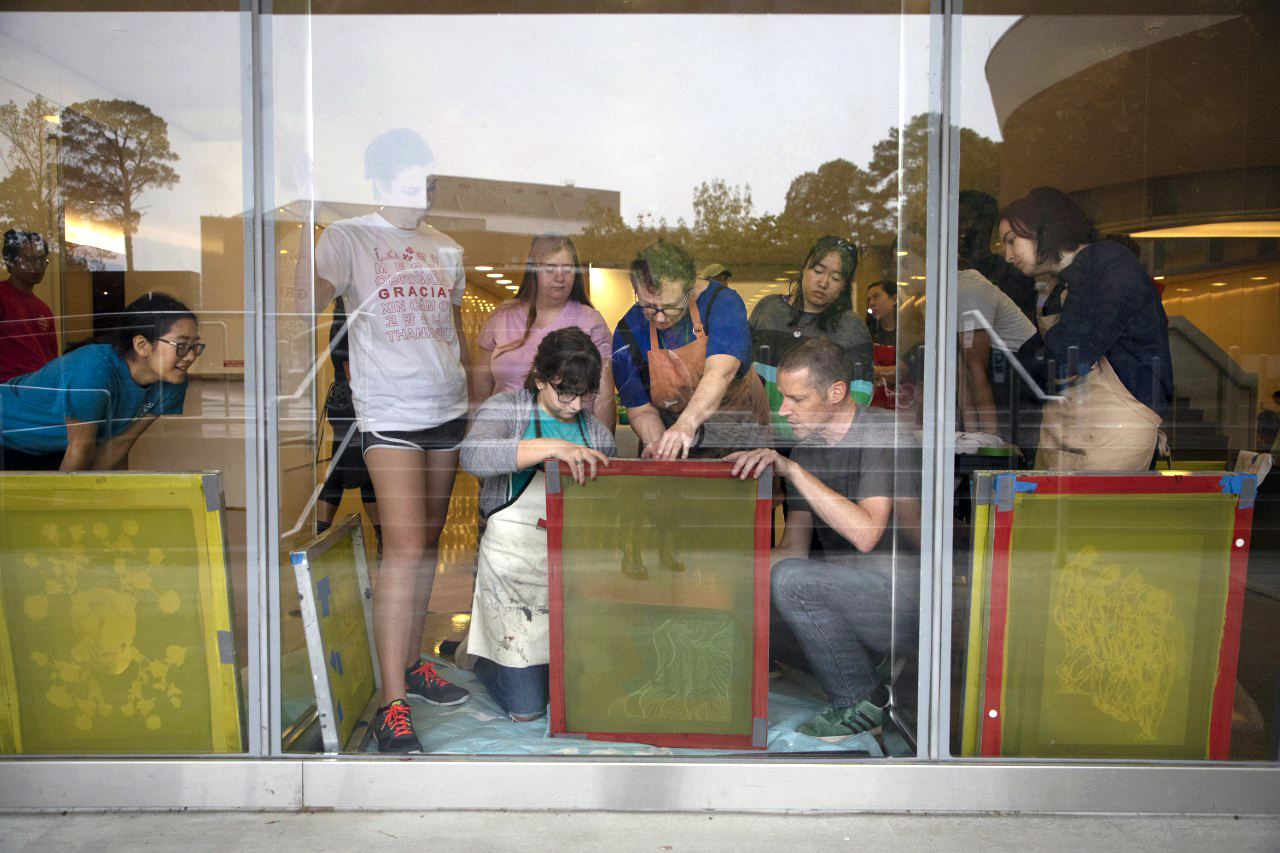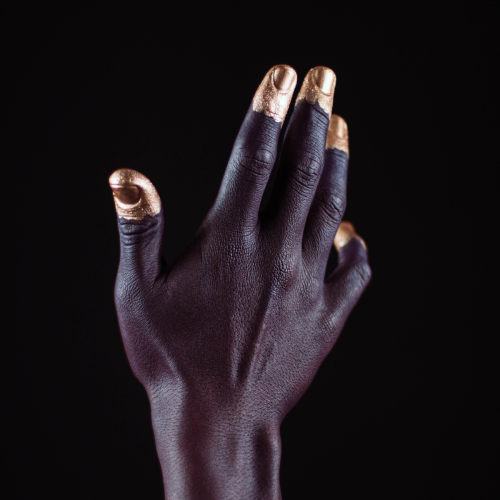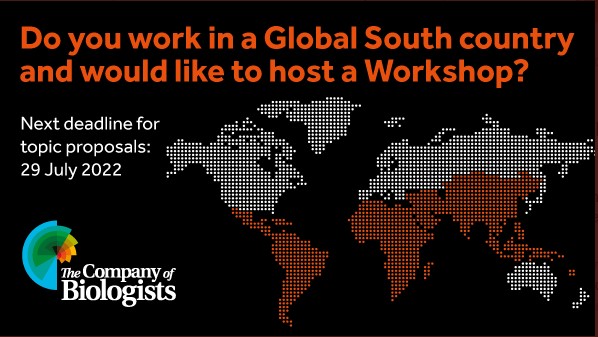June in preprints
Posted by the Node, on 8 July 2022
Welcome to our monthly trawl for developmental biology (and related) preprints.
The preprints this month are hosted on bioRxiv, arXiv and preprints.org – use these links to get to the section you want.
- Patterning & signalling
- Morphogenesis & mechanics
- Genes & genomes
- Stem cells, regeneration & disease modelling
- Plant development
- Evo-devo
Developmental biology
| Patterning & signalling
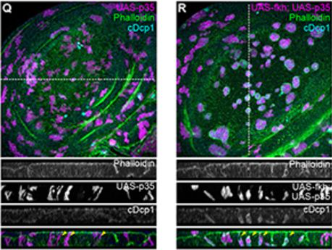
Bilateral JNK activation is a hallmark of interface contractility and promotes elimination of aberrant cells
Deepti Prasad, Katharina Illek, Friedericke Fischer, Kathrin Holstein, Anne-Kathrin Classen
Planar cell polarity: intracellular asymmetry and supracellular gradients of Dachsous
Adrià Chorro, Bhavna Verma, Maylin Homfeldt, Beatríz Ibáñez, Peter A. Lawrence, José Casal
MicroRNA-27a is essential for bone remodeling by modulating p62-mediated osteoclast signaling
Shumin Wang, Eri O Maruyama, John Martinez, Trunee Hsu, Wencheng Wu, Wei Hsu, Takamitsu Maruyama
Hox11-expressing interstitial cells contribute to adult skeletal muscle at homeostasis
Corey G.K. Flynn, Qingyuan Guo, Paul R. Van Ginkel, Steven M. Hrycaj, Aubrey E. McDermott, Angelo Madruga, Deneen M. Wellik
Suppression of YAP Safeguards Human Naïve Pluripotency
Anish Dattani, Tao Huang, Austin Smith, Ge Guo
The homeodomain transcription factor Ventx2 regulates respiratory progenitor cell number and differentiation timing during Xenopus lung development
Scott A. Rankin, Aaron M. Zorn
Analysis of SMAD1/5 target genes in a sea anemone reveals ZSWIM4-6 as a novel BMP signaling modulator
Paul Knabl, Alexandra Schauer, Autumn Penecilla Pomreinke, Bob Zimmermann, Katherine W. Rogers, Patrick Müller, Grigory Genikhovich
Shoc2 controls ERK1/2-driven neural crest development by balancing components of the extracellular matrix
Rebecca G. Norcross, Lina Abdelmoti, Eric C. Rouchka, Kalina Andreeva, Olivia Tussey, Daileen Landestoy, Emilia Galperin
Interstitial Notch signaling regulates nephron development via the Gata3-Renin axis in the mouse kidney
Eunah Chung, Mike Adam, Andrew S. Potter, Sara M. Marshall, S. Steven Potter, Joo-Seop Park
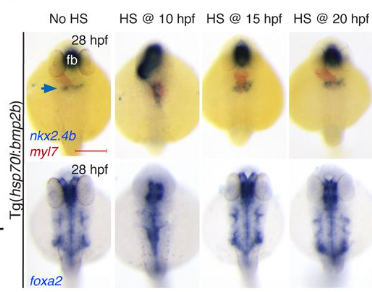
Mesodermal FGF and BMP govern the sequential stages of zebrafish thyroid specification
Benoit Haerlingen, Robert Opitz, Isabelle Vandernoot, Angelo Molinaro, Meghna Shankar, Pierre Gillotay, Achim Trubiroha, Sabine Costagliola
Hippo pathway-mediated YAP1/TAZ inhibition is essential for proper pancreatic endocrine specification and differentiation
Yifan Wu, Kunhua Qin, Kevin Lopez, Jun Liu, Michael Nipper, Janice J Deng, Xue Yin, Logan Ramjit, Zhengqing Ye, Pei Wang
A Chemical-mechanical Coupled Model Predicts Roles of Spatial Distribution of Morphogen in Maintaining Tissue Growth
Alireza Ramezani, Samuel Britton, Roya Zandi, Mark Alber, Ali Netmatbakhsh, Weitao Chen
Multifunctional role of GPCR signaling in epithelial tube formation
Vishakha Vishwakarma, Thao Phuong Le, SeYeon Chung
Sex-Specific Role of Myostatin Signaling in Neonatal Muscle Growth, Denervation Atrophy, and Neuromuscular Contractures
Marianne E Emmert, Parul Aggarwal, Kritton Shay-Winkler, Se-Jin Lee, Qingnian Goh, Roger Cornwall
Retinoic acid control of pax8 during renal specification of Xenopus pronephros involves hox and meis3
Jennifer Durant-Vesga, Nanoka Suzuki, Haruki Ochi, Ronan Le Bouffant, Alexis Eschstruth, Hajime Ogino, Muriel Umbhauer, Jean-François Riou
Spatio-temporal Control of ERK Pulse Frequency Coordinates Fate Decisions during Mammary Acinar Morphogenesis
Pascal Ender, Paolo Armando Gagliardi, Maciej Dobrzyński, Agne Frismantiene, Coralie Dessauges, Thomas Höhener, Marc-Antoine Jacques, Andrew R. Cohen, Olivier Pertz
A novel Wnt pathway orients Par complex-dependent cell polarity
Shigeki Yoshiura, Fumio Matsuzaki
| Morphogenesis & mechanics
Direct Force Measurement and Loading on Developing Tissues in Intact Avian Embryos
Chon U Chan, Fengzhu Xiong, Arthur Michaut, Olivier Pourquie, L. Mahadevan
Temporally and regionally distinct morphogenetic processes govern zebrafish tail fin blood vessel network expansion
Elvin V. Leonard, Sana Safatul Hasan, Arndt F. Siekmann

Coordination Between Embryo Growth and Trophoblast Migration Upon Implantation Delineates Mouse Embryogenesis
V. Bondarenko, M. Nikolaev, D. Kromm, R. Belousov, A. Wolny, S. Rezakhani, J. Hugger, V. Uhlmann, L. Hufnagel, A. Kreshuk, J. Ellenberg, A. Erzberger, M. Lutolf, T. Hiiragi
In vivo imaging and regression analysis reveal cell-non-autonomous functions of Shroom3 during neural tube closure
Austin T. Baldwin, Juliana H. Kim, John B. Wallingford
Regulation of Aortic Morphogenesis and VE-Cadherin Dynamics by VEGF
Julian Jadon, Ronit Yelin, Alaa A. Arraf, Manar Abboud Asleh, Mira Zaher, Thomas M. Schultheiss
Actomyosin-mediated cellular tension promotes Yap nuclear translocation and myocardial proliferation through α5 integrin signaling
Xiaofei Li, Callie McLain, Michael S. Samuel, Michael F. Olson, Glenn L. Radice
PCP and Septins govern the polarized organization and mechanics of the actin cytoskeleton during convergent extension
Caitlin C Devitt, Shinuo Weng, Vidal D Bejar-Padilla, José Alvarado, John B Wallingford
Matrix fibroblast function during alveolarization is dependent on GATA6
Mereena George Ushakumary, Jenna Green, Matthew Richard Riccetti, Cheng-Lun Na, Divya Mohanraj, Minzhe Guo, Anne-Karina Theresia Perl
Novel insights into the fundamentals of palatal shelf elevation dynamics in normal mouse embryos
Jeremy P. Goering, Michael Moedritzer, Marta Stetsiv, Dona Greta Isai, Brittany M. Hufft-Martinez, Zaid Umar, Madison K. Rickabaugh, Paul Keselman, Munish Chauhan, William M. Brooks, Kenneth J. Fischer, Andras Czirok, Irfan Saadi
ERK-mediated Curvature Feedback Regulates Branching Morphogenesis in Lung Epithelial Tissue
Tsuyoshi Hirashima, Michiyuki Matsuda
Integration of mouse ovary morphogenesis with developmental dynamics of the oviduct, ovarian ligaments, and rete ovarii
Jennifer McKey, Dilara N. Anbarci, Corey Bunce, Alejandra E. Ontiveros, Richard R. Behringer, Blanche Capel
Activity-driven extracellular volume expansion drives vertebrate axis elongation
Arthur Michaut, Alessandro Mongera, Anupam Gupta, Mattia Serra, Pietro Rigoni, Jong Gwan Lee, Felipe Duarte, Adam R. Hall, L. Mahadevan, Karine Guevorkian, Olivier Pourquié
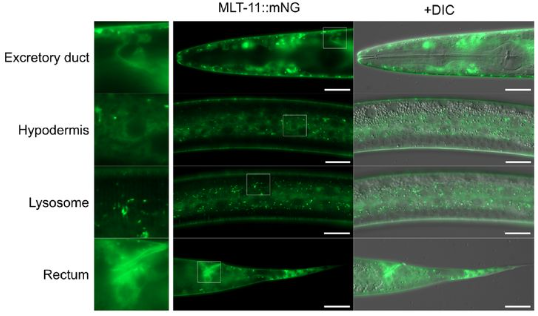
The conserved, secreted protease inhibitor MLT-11 is necessary for C. elegans molting and embryogenesis
James Matthew Ragle, Max T. Levenson, John C. Clancy, An A. Vo, Vivian Pham, Jordan D. Ward
Mechanical loading is required for initiation of extracellular matrix deposition at the developing murine myotendinous junction
Sarah N. Lipp, Kathryn R. Jacobson, Haley A. Colling, Tyler G. Tuttle, Dalton T. Miles, Kaitlin P. McCreery, Sarah Calve
Mechanical Loading due to Muscle Movement Regulates Establishment of the Collagen Network in the Developing Murine Skeleton
S. Ahmed, A.V. Rogers, N. C. Nowlan
Mechanoregulatory role of TRPV4 in prenatal skeletal development
Nidal Khatib, James Monsen, Saima Ahmed, Yuming Huang, David A. Hoey, Niamh C. Nowlan
Dynamic interplay of protrusive microtubule and contractile actomyosin forces drives tissue extension
Amrita Singh, Sameedha Thale, Tobias Leibner, Andrea Ricker, Harald Nüsse, Jürgen Klingauf, Mario Ohlberger, Maja Matis
Pyramidal neuron morphogenesis requires a septin network that stabilizes filopodia and suppresses lamellipodia during neurite initiation
Megan R. Radler, Xiaonan Liu, Megan Peng, Brenna Doyle, Kazuhito Toyo-Oka, Elias T. Spiliotis
Mechanotransductive feedback control of endothelial cell motility and vascular morphogenesis
Devon E. Mason, Megan Goeckel, Sebastián L. Vega, Pei-Hsun Wu, Dymonn Johnson, Su-Jin Heo, Denis Wirtz, Jason A. Burdick, Levi Wood, Brian Y. Chow, Amber N. Stratman, Joel D. Boerckel
Dishevelled controls bulk cadherin dynamics and the stability of individual cadherin clusters during convergent extension
Robert J. Huebner, John B. Wallingford
| Genes & genomes
The highly expressed ERV1 forms virus-like particles for regulating early embryonic development
Wenjing Li, Shujuan Liu, Jianglin Zhao, Ruizhi Deng, Yayi Liu, Huijia Li, Hongwei Ma, Yanzhi Chen, Jingcheng Zhang, Yongsheng Wang, Jianmin Su, Fusheng Quan, Xu liu, Yan Luo, Yong Zhang, Jun Liu
Regeneration and Developmental Enhancers Are Differentially Compatible with Minimal Promoters
Ian J. Begeman, Benjamin Emery, Andrew Kurth, Junsu Kang
Multi-omics analysis demonstrates a critical role for GLP methyltransferase in transcriptional repression during oogenesis
Hannah Demond, Courtney W. Hanna, Juan Castillo-Fernandez, Fátima Santos, Evangelia K. Papachristou, Anne Segonds-Pichon, Kamal Kishore, Clive S. D’Santos, Gavin Kelsey
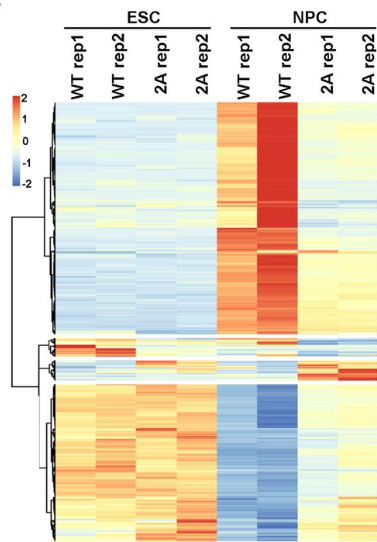
Mcm2 promotes stem cell differentiation via its ability to bind H3-H4
Xiaowei Xu, Xu Hua, Kyle Brown, Xiaojun Ren, Zhiguo Zhang
The Prmt5-Vasa module is essential for dichotomous spermatogenesis in Bombyx mori
Xu Yang, Dongbin Chen, Shirui Zheng, Meiyan Yi, Yongjian Liu, Yongping Huang
Conservation at the uterine-placental interface
Regan L. Scott, Ha T. H. Vu, Ashish Jain, Khursheed Iqbal, Geetu Tuteja, Michael J. Soares
Hnf1b renal expression directed by a distal enhancer responsive to Pax8
L. Goea, I. Buisson, V. Bello, A. Eschstruth, M. Paces-Fessy, R. Le Bouffant, A. Chesneau, S. Cereghini, J.F. Riou, M. Umbhauer
The Grainyhead/LSF transcription factor GRH-1 is rhythmically required for molting
Milou W.M. Meeuse, Yannick P. Hauser, Smita Nahar, Kathrin Braun, Helge Großhans
Decoding gene regulation in the mouse embryo using single-cell multi-omics
Ricard Argelaguet, Tim Lohoff, Jingyu Gavin Li, Asif Nakhuda, Deborah Drage, Felix Krueger, Lars Velten, Stephen J. Clark, Wolf Reik
Distinct airway progenitor cells drive epithelial heterogeneity in the developing human lung
Ansley S. Conchola, Tristan Frum, Zhiwei Xiao, Peggy P. Hsu, Renee F.C. Hein, Alyssa Miller, Yu-Hwai Tsai, Angeline Wu, Kamika Kaur, Emily M. Holloway, Abhinav Anand, Preetish K. L. Murthy, Ian Glass, Purushothama R. Tata, Jason R. Spence
Single-Cell RNA-seq Uncovers Dynamic Processes Orchestrated by RNA-Binding Protein DDX43 in Chromatin Remodeling during Spermiogenesis
Huanhuan Tan, Weixu Wang, Chongjin Zhou, Yanfeng Wang, Shu Zhang, Pinglan Yang, Rui Guo, Wei Chen, Lan Ye, Yiqiang Cui, Ting Ni, Ke Zheng
Neural plate progenitors give rise to both anterior and posterior pituitary cells
Qiyu Chen, Dena Leshkowitz, Hanjie Li, Andreas van Impel, Stefan Schulte-Merker, Ido Amit, Gil Levkowitz
CRISPR/Cas9 and FLP-FRT mediated multi-modular engineering of the cis-regulatory landscape of the bithorax complex of Drosophila melanogaster
Nikhil Hajirnis, Shubhanshu Pandey, Rakesh K Mishra
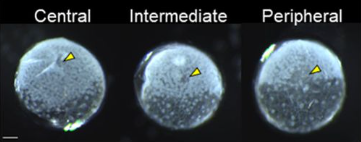
Lineage-specific, fast-evolving GATA-like gene regulates zygotic gene activation to promote endoderm specification and pattern formation in the Theridiidae spider
Sawa Iwasaki-Yokozawa, Ryota Nanjo, Yasuko Akiyama-Oda, Hiroki Oda
Mettl14-mediated m6A modification ensures the cell cycle progression of late-born retinal progenitor cells
Liang Li, Yue Sun, Alexander E. Davis, Man-Ru Wu, Cheng-Hui Lin, Sui Wang
Metabolic control of histone acetylation for precise and timely regulation of minor ZGA in early mammalian embryos
Jingyu Li, Jiaming Zhang, Weibo Hou, Xu Yang, Xiaoyu Liu, Yan Zhang, Meiling Gao, Ming Zong, Zhixiong Dong, Zhonghua Liu, Jingling Shen, Weitao Cong, Chunming Ding, Shaorong Gao, Guoning Huang, Qingran Kong
Oct1 recruits the histone lysine demethylase Utx to promote lineage specification
Jelena Perovanovic, Yifan Wu, Hosiana Abewe, Zuolian Shen, Erik Hughes, Jason Gertz, Mahesh B. Chandrasekharan, Dean Tantin
Inducible degradation of the Drosophila Mediator subunit Med19 reveals its role in regulating developmental but not constitutively-expressed genes
Denis Jullien, Emmanuelle Guillou, Sandra Bernat-Fabre, Adeline Payet, Henri-Marc G. Bourbon, Muriel Boube
Developmental cell fate choice employs two distinct cis regulatory strategies
M. Joaquina Delás, Christos M Kalaitzis, Tamara Fawzi, Madeleine Demuth, Isabel Zhang, Hannah T Stuart, Elena Costantini, Kenzo Ivanovitch, Elly M Tanaka, James Briscoe
Human ERG Oncoprotein Represses Chip/LDB1 LIM-Domain Binding Gene in Drosophila
Mahima Bharti, Anjali Bajpai, Umanshi Rautela, Nishat Manzar, Bushra Ateeq, Pradip Sinha
Developing and adult reef fish show rapid, reversible light-induced plasticity in their visual system
Lily G. Fogg, Fabio Cortesi, Camille Gache, David Lecchini, N. Justin Marshall, Fanny de Busserolles
An epigenetic barrier sets the timing of human neuronal maturation
Gabriele Ciceri, Hyunwoo Cho, Meghana Kshirsagar, Arianna Baggiolini, Kelly A Aromolaran, Ryan M Walsh, Peter A Goldstein, Richard P. Koche, Christina S Leslie, Lorenz Studer
Enhancer architecture and chromatin accessibility constrain phenotypic space during development
Rafael Galupa, Gilberto Alvarez-Canales, Noa Ottilie Borst, Timothy Fuqua, Lautaro Gandara, Natalia Misunou, Kerstin Richter, Mariana R. P. Alves, Esther Karumbi, Melinda Liu Perkins, Tin Kocijan, Christine A. Rushlow, Justin Crocker
Cleavage of histone H2A during embryonic stem cell differentiation destabilizes nucleosomes to counteract gene activation
Mariel Coradin, Joseph Cesare, Yemin Lan, Zhexin Zhu, Peder J. Lund, Simone Sidoli, Yekaterina Perez, Congcong Lu, Elizabeth G. Porter, Charles W. M. Robert, Benjamin A. Garcia
SLAMseq resolves the kinetics of maternal and zygotic gene expression in early zebrafish embryogenesis
Pooja Bhat, Luis E. Cabrera-Quio, Veronika A. Herzog, Nina Fasching, Andrea Pauli, Stefan L. Ameres
Spatiotemporal dynamics of zygotic genome activation in basal chordates revealed by interspecific hybrids
Jiankai Wei, Wei Zhang, Liang Leng, An Jiang, Yuting Li, Yonghang Ge, Quanyong Zhang, Liya Zhang, Haiyan Yu, Kai Chen, Bo Dong
Foxn1 overexpression promotes thymic epithelial progenitor cell proliferation and mTEC maintenance, but does not prevent thymic involution
Jie Li, Lucas P. Wachsmuth, Shiyun Xiao, Brian G. Condie, Nancy R. Manley
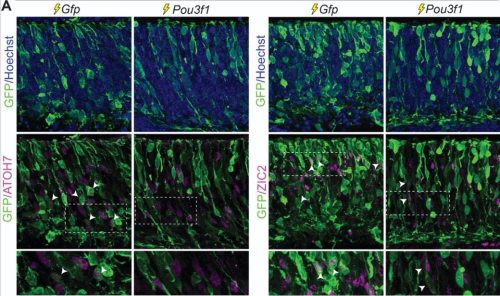
Pou3f1 orchestrates a gene regulatory network controlling contralateral retinogeniculate projections
Michel Fries, Thomas W. Brown, Christine Jolicoeur, Camille Boudreau-Pinsonneault, Awais Javed, Pénélope Abram, Michel Cayouette
NFATc1 negatively determines chondrocyte differentiation in articular cartilage progenitors
Fan Zhang, Ying Zhao, Manqi Wang, Bin Zhou, Bin Zhou, Xianpeng Ge
Multi-omics analysis reveals a crucial role for Retinoic Acid in promoting epigenetic and transcriptional competence of an in vitro model of human Pharyngeal Endoderm
Andrea Cipriano, Alessio Colantoni, Danielle Gomes, Mahdi Moqri, Alexander Parker, Matthew Caldwell, Francesca Briganti, Jonathan Fiorentino, Maria Grazia Roncarolo, Antonio Baldini, Katja G Weinacht, Gian Gaetano Tartaglia, Vittorio Sebastiano
An environment to genome control loop using RNA interference processing of secreted tRNAs may regulates the C. elegans chemo-sensory behavior
Jean-Jacques Remy
Recapitulation of the embryonic transcriptional program in insect pupae
Alexandra M Ozerova, Mikhail S. Gelfand
Dopamine pathway characterization during the reproductive mode switch in the pea aphid
Gaël Le Trionnaire, Sylvie Hudaverdian, Gautier Richard, Sylvie Tanguy, Florence Gleonnec, Nathalie Prunier-Leterme, Jean-Pierre Gauthier, Denis Tagu
Cardiac neural crest lineage diversity and underlying gene regulatory networks revealed by multimodal analysis
Akiyasu Iwase, Yasunobu Uchijima, Daiki Seya, Mayuko Kida, Hiroki Higashiyama, Kazuhiro Matsui, Akashi Taguchi, Shogo Yamamoto, Shiro Fukuda, Seitaro Nomura, Takahide Kohro, Chisa Shukunami, Haruhiko Akiyama, Masahide Seki, Yutaka Suzuki, Youichiro Wada, Hiroyuki Aburatani, Yukiko Kurihara, Sachiko Miyagawa-Tomita, Hiroki Kurihara
Evidence for the digital programming of cellular differentiation: characterization of binary switches in lineage-determining transcription factors
Hongchuan Li, Md Ahasanur Rahman, Paul W Wright, Jennie Cao, Shashikala Ratnayake, Qingrong Chen, Chunhua Yan, Daoud Meerzaman, Aharon G Freud, Stephen K Anderson

DHFR metabolic activity controls neurogenic transitions in the developing Human and mouse neocortex
Sulov Saha, Thomas Jungas, David Ohayon, Christophe Audouard, Tao Ye, Mohamad-Ali Fawal, Alice Davy
Developmental timing of programmed DNA elimination in Paramecium tetraurelia recapitulates germline transposon evolutionary dynamics
Coralie Zangarelli, Olivier Arnaiz, Mickaël Bourge, Kevin Gorrichon, Yan Jaszczyszyn, Nathalie Mathy, Loïc Escoriza, Mireille Bétermier, Vinciane Régnier
Postnatal developmental trajectory of sex-biased gene expression in the mouse pituitary gland
Huayun Hou, Cadia Chan, Kyoko E. Yuki, Dustin Sokolowski, Anna Roy, Rihao Qu, Liis Uusküla-Reimand, Mariela Faykoo-Martinez, Matt Hudson, Christina Corre, Anna Goldenberg, Zhaolei Zhang, Mark R. Palmert, Michael D. Wilson
A role for Flipons and miRNAs in Promoter Specification during Development
Alan Herbert, Fedor Pavlov, Dmitrii Konovalov, Maria Poptsova
Transcriptome analysis of human preimplantation embryo reveals expressed waves associated with blastulation failure based on embryonic grade and age
Ping Yuan, Ying Liu, Haijing Zhao, Guangwei Ma, Lingyan Zheng, Qingxue Zhang, Hui Chen, Wenjun Wang, Yabin Guo
Resetting of H3K4me2 during mammalian parental-to-zygote transition
Chong Wang, Yong Shi, Jia Guo, Kaiyue Hu, Yaqian Wang, Yang Li, Jiawei Xu
| Stem cells, regeneration & disease modelling
The centrosomal protein 83 (CEP83) regulates human pluripotent stem cell differentiation towards the kidney lineage
Fatma Mansour, Christian Hinze, Narasimha Swamy Telugu, Jelena Kresoja, Iman B. Shaheed, Christian Mosimann, Sebastian Diecke, Kai M. Schmidt-Ott
The native cell differentiation program aberrantly recapitulated in yki3S/A-induced intestinal hyperplasia drives invasiveness and cachexia-like wasting phenotypes
Inez K.A. Pranoto, Jiae Lee, Young V. Kwon
Valproic Acid Affects Neuronal Specification and Differentiation During Early Optic Tectum Development of Zebrafish
Sierra C. Dixon, Bailey J. Calder, Shane M. Lilya, Brandon M. Davies, Annalie Martin, Maggie Peterson, Jason M. Hansen, Arminda Suli
Transit-amplifying progenitor with maturation-dependent behavior contributes to epidermal renewal
Sangeeta Ghuwalewala, Kevin Jiang, Sara Ragi, David Shalloway, Tudorita Tumbar

Downregulation of Yap1 During Limb Regeneration Results in Defective Bone Formation in Axolotl
Sadık Bay, Gürkan Öztürk, Nesrin Emekli, Turan Demircan
KMT2D-NOTCH Mediates Coronary Abnormalities in Hypoplastic Left Heart Syndrome
Zhiyun Yu, Xin Zhou, Ziyi Liu, Victor Pastrana-Gomez, Yu Liu, Minzhe Guo, Lei Tian, Timothy J. Nelson, Nian Wang, Seema Mital, David Chitayat, Joseph C. Wu, Marlene Rabinovitch, Sean M. Wu, Michael P. Snyder, Yifei Miao, Mingxia Gu
LSD1-mediated demethylation of β-catenin regulates muscle stem cell self-renewal potential
Sandrine Mouradian, Delia Cicciarello, Nicolas Lacoste, Francesca Berretta, Laurent Schaeffer, Isabella Scionti
New functional vessels form after spinal cord injury in zebrafish
Ana Ribeiro, Mariana Rebocho da Costa, Carmen de Sena-Tomás, Elsa Charas Rodrigues, Raquel Quitéria, Tiago Maçarico, Susana Constantino Rosa Santos, Leonor Saúde
Single-cell transcriptomics identifies regulation of invasive behavior in Drosophila follicle cells with polarity loss
Deeptiman Chatterjee, Xian-Feng Wang, Allison Jevitt, Caique Almeida Machado Costa, Yi- Chun Huang, Wu-Min Deng
Regulated extracellular matrix trafficking shapes cell growth during cartilage morphogenesis
Daniel S. Levic, Gokhan Unlu, David B. Melville, Ela W. Knapik
Clonal inactivation of telomerase promotes accelerated stem cell differentiation
Kazuteru Hasegawa, Yang Zhao, Alina Garbuzov, M. Ryan Corces, Lu Chen, Peggie Cheung, Yuning Wei, Howard Y. Chang, Steven E. Artandi
Dkk1 inhibition normalizes limb phenotypes in a mouse model of Fzd2 associated omodysplasia Robinow syndromes
Ryan P. Liegel, Megan N. Michalski, Sanika Vaidya, Elizabeth Bittermann, Erin Finnerty, Chelsea A. Menke, Cassandra R. Diegel, Zhendong A. Zhong, Bart O. Williams, Rolf W. Stottmann
Chromosome silencing in vitro reveals trisomy 21 causes cell-autonomous deficits in angiogenesis and early dysregulation in Notch signaling
Jennifer E. Moon, Jeanne B. Lawrence
Epo-IGF1R crosstalk expands stress-specific progenitors in regenerative erythropoiesis and myeloproliferative neoplasm
Hsi-Hsien Hsieh, Huiyu Yao, Yue Ma, Yuannyu Zhang, Xue Xiao, Helen Stephens, Stephen S. Chung, Lin Xu, Jian Xu, Raajit K. Rampal, Lily Jun-shen Huang
Craniofacial dysmorphology in Down Syndrome is caused by increased dosage of Dyrk1a and at least three other genes
Yushi Redhead, Dorota Gibbins, Eva Lana-Elola, Sheona Watson-Scales, Lisa Dobson, Matthias Krause, Karen J. Liu, Elizabeth M. C. Fisher, Jeremy B.A. Green, Victor L.J. Tybulewicz
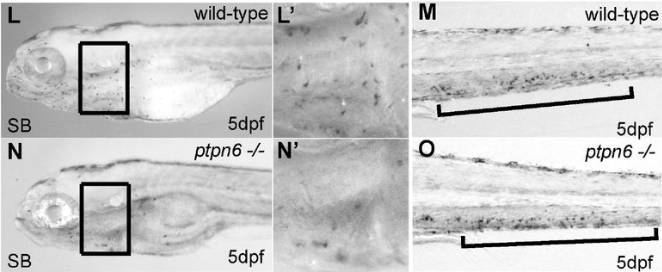
Loss of Shp1 impairs myeloid cell function and causes lethal inflammation in zebrafish larvae
Maaike Allers, Petra A. Bakker, Herman P. Spaink, Jeroen den Hertog
COP9 signalosome component CSN-5 stabilizes PUF proteins FBF-1 and FBF-2 in C. elegans germline stem cells
Emily Osterli, Mary Ellenbecker, Xiaobo Wang, Mikaya Terzo, Ketch Jacobson, Ekaterina Voronina
Foxm1 drives cardiomyocyte proliferation in adult zebrafish after cardiac injury
Daniel A. Zuppo, Maria A. Missinato, Lucas Santana-Santos, Guang Li, Panayiotis V. Benos, Michael Tsang
Delineation and birth of a layered intestinal stem cell niche
Neil McCarthy, Guodong Tie, Shariq Madha, Judith Kraiczy, Adrianna Maglieri, Ramesh A. Shivdasani
Modular, Cascade-like Transcriptional Program of Regeneration in Stentor
Pranidhi Sood, Athena Lin, Connie Yan, Rebecca McGillivary, Ulises Diaz, Tatyana Makushok, Wallace F. Marshall
Modeling of Aberrant Epithelial Reprogramming in Idiopathic Pulmonary Fibrosis using Human Induced Pluripotent Stem Cell-derived Alveolar Organoids
Victoria Ptasinski, Susan J. Monkley, Karolina Öst, Markus Tammia, Catherine Overed-Sayer, Petra Hazon, Darcy E. Wagner, Lynne A. Murray
Connexin43 Overexpression Promotes Bone Regeneration by Osteogenesis and Angiogenesis in Rat Glucocorticoid-Induced Osteonecrosis of the Femoral Head
Xin Zhao, Changjun Chen, Yue Luo, Donghai Li, Qiuru Wang, Yuying Fang, Pengde Kang
Skeletal muscle lineage is dispensable for appendage regeneration in axolotl
Yan Hu, Xiangyu Pan, Yu Shi, Yuanhui Qiu, Liqun Wang, Prayag Murawala, Yanmei Liu, Wanjin Xing, Elly M Tanaka, Ji-Feng Fei
A single cell spatial temporal atlas of skeletal muscle reveals cellular neighborhoods that orchestrate regeneration and become disrupted in aging
Yu Xin Wang, Colin A. Holbrook, James N. Hamilton, Jasmin Garoussian, Mohsen Afshar, Shiqi Su, Christian M. Schürch, Michael Y. Lee, Yury Goltsev, Anshul Kundaje, Garry P. Nolan, Helen M. Blau
Peroxiredoxin 5 regulates osteogenic differentiation via interaction with hnRNPK during bone regeneration
Eunjin Cho, Xiangguo Che, Mary Jasmin Ang, Seongmin Cheon, Jinkyung Lee, Kwang Soo Kim, Chang Hoon Lee, Sang-Yeop Lee, Hee-Young Yang, Changjong Moon, Chungoo Park, Je-Yong Choi, Tae-Hoon Lee
Integrative single-cell analysis of cardiogenesis identifies developmental trajectories and non-coding mutations in congenital heart disease
Mohamed Ameen, Laksshman Sundaram, Abhimanyu Banerjee, Mengcheng Shen, Soumya Kundu, Surag Nair, Anna Shcherbina, Mingxia Gu, Kitchener D. Wilson, Avyay Varadarajan, Nirmal Vadgama, Akshay Balsubramani, Joseph C. Wu, Jesse Engreitz, Kyle Farh, Ioannis Karakikes, Kevin C Wang, Thomas Quertermous, William Greenleaf, Anshul Kundaje
| Plant development
bHLH heterodimer complex variations shape meristems in Arabidopsis thaliana by affecting target gene specificity
Eliana Mor, Markéta Pernisová, Max Minne, Guillaume Cerutti, Dagmar Ripper, Jonah Nolf, Jennifer Andres, Laura Ragni, Matias D. Zurbriggen, Bert De Rybel, Teva Vernoux
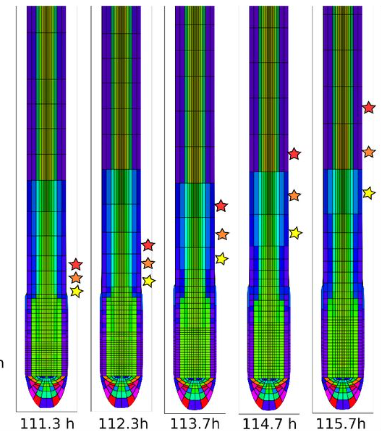
Reverse engineering lateral root stable prebranch site formation; Complementary roles for auxin and auxin signalling
Joana Teixeira Santos, Thea van den Berg, Kirsten ten Tusscher
A quantitative gibberellin signalling biosensor reveals a role for gibberellins in internode specification at the shoot apical meristem
Bihai Shi, Amelia Felipo-Benavent, Guillaume Cerutti, Carlos Galvan-Ampudia, Lucas Jilli, Geraldine Brunoud, Jérome Mutterer, Elody Vallet, Lali Sakvarelidze-Achard, Jean-Michel Davière, Alejandro Navarro-Galiano, Ankit Walia, Shani Lazary, Jonathan Legrand, Roy Weinstain, Alexander M. Jones, Salomé Prat, Patrick Achard, Teva Vernoux
Lysine 27 of histone H3.3 is a fine modulator of developmental gene expression and stands as an epigenetic checkpoint for lignin biosynthesis in Arabidopsis
Kateryna Fal, Denisa Tomkova, Marie Le Masson, Adi Faigenboim, Emeline Pano, Nickolay Ishkhneli, Netta-Lee Moyal, Claire Villette, Marie-Edith Chabouté, Alexandre Berr, Leor Eshed Williams, Cristel C. Carles
Extracurricular roles and divergent regulation of FAMA in Brachypodium and Arabidopsis stomatal development
Katelyn H. McKown, M. Ximena Anleu Gil, Andrea Mair, Shouling Xu, Dominique C. Bergmann
3D (x-y-t) Raman imaging of tomato fruit cuticle: microchemistry during development
Ana González Moreno, Eva Domínguez, Konrad Mayer, Nannan Xiao, Peter Bock, Antonio Heredia, Notburga Gierlinger
Auxin-dependent acceleration of cell division rates regulates root growth at elevated temperature
Haiyue Ai, Julia Bellstaedt, Kai Steffen Bartusch, Lennart Eschen-Lippold, Steve Babben, Gerd Ulrich Balcke, Alain Tissier, Bettina Hause, Tonni Grube Andersen, Carolin Delker, Marcel Quint
Packing limits and developmental integration are not sufficient to explain stomatal anatomical evolution in flowering plants
Christopher D. Muir, Miquel Àngel Conesa, Jeroni Galmés, Varsha S. Pathare, Patricia Rivera, Rosana López Rodríguez, Teresa Terrazas, Dongliang Xiong
Ralstonia solanacearum alters root developmental programs in auxin-dependent and independent manners
Hao Xue, Gang Yu, Lu Zhang, Meng Li, Rosa Lozano-Durán, Alberto P. Macho
Cell division controls final fruit size in three apple (Malus x domestica) cultivars
Siti Khadijah A. Karim, Andrew C. Allan , Robert J. Schaffer , Karine M. David
| Evo-devo
Metamorphosis of memory circuits in Drosophila reveal a strategy for evolving a larval brain
James W. Truman, Jacquelyn Price, Rosa L. Miyares, Tzumin Lee
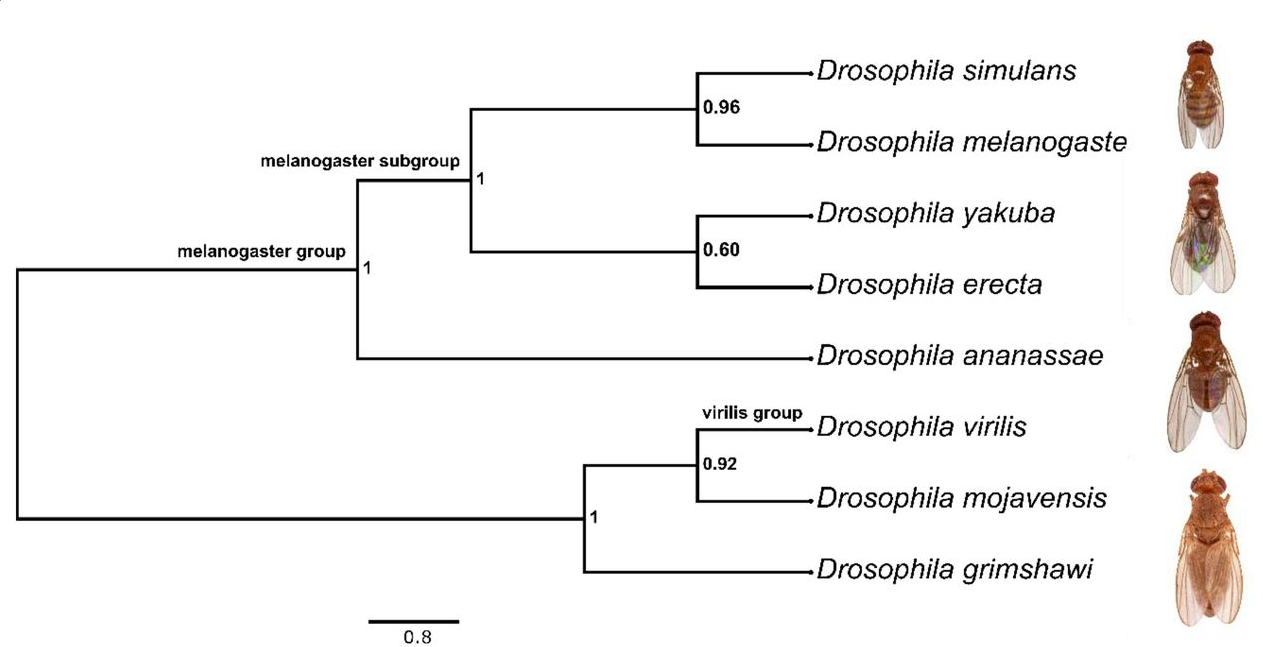
A cis-regulatory sequence of the wing selector gene, vestigial, drives the evolution of scaling relationships in Drosophila species
Keity J. Farfán-Pira, Teresa I. Martínez-Cuevas, Timothy A. Evans, Marcos Nahmad
Cell Biology
Repression of lysosomal transcription factors Tfeb and Tfe3 is essential for the migration and function of microglia
Harini Iyer, Kimberle Shen, Ana M. Meireles, William S. Talbot
TOM-1/Tomosyn acts with the UNC-6/Netrin receptor UNC-5 to inhibit growth cone protrusion in Caenorhabditis elegans
Snehal S. Mahadik, Erik A. Lundquist
CITED2 IS A CONSERVED REGULATOR OF DEEP HEMOCHORIAL PLACENTATION
Marija Kuna, Pramod Dhakal, Khursheed Iqbal, Esteban M. Dominguez, Lindsey N. Kent, Masanaga Muto, Ayelen Moreno-Irusta, Keisuke Kozai, Kaela M. Varberg, Hiroaki Okae, Takahiro Arima, Henry M. Sucov, Michael J. Soares
AKT1-FOXO4 AXIS REGULATES HEMOCHORIAL PLACENTATION
Keisuke Kozai, Ayelen Moreno-Irusta, Khursheed Iqbal, Mae-Lan Winchester, Regan L. Scott, Mikaela E. Simon, Masanaga Muto, Marc R. Parrish, Michael J. Soares
Live imaging of delamination in Drosophila shows epithelial cell motility and invasiveness are independently regulated
Mikiko Inaki, Kenji Matsuno
Human sperm TMEM95 binds eggs and facilitates membrane fusion
Shaogeng Tang, Yonggang Lu, Will M. Skinner, Mrinmoy Sanyal, Polina V. Lishko, Masahito Ikawa, Peter S. Kim
The DNA Damage response and cell competition are p53- and Xrp1-dependent processes that suppress hyperplastic aneuploidy
Chaitali Khan, Nicholas E. Baker
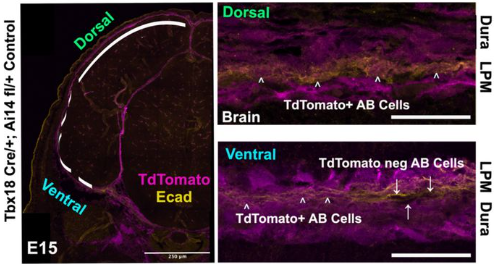
‘Formation and function of the meninges arachnoid barrier around the developing brain’
Julia Derk, Christina N. Como, Hannah E. Jones, Luke R. Joyce, Stephanie Bonney, Rebecca O’Rourke, Brad Pawlikowski, Kelly S. Doran, Julie A. Siegenthaler
E-cadherin mediated Apical Membrane Initiation Site localisation
Xuan Liang, Antonia Weberling, Chun Yuan Hii, Magdalena Zernicka-Goetz, Clare E Buckley
Evolutionarily conserved midbody reorganization precedes ring canal formation during gametogenesis
Kari L. Price, Dyuthi M. Tharakan, Lynn Cooley
WDR47 facilitates ciliogenesis by modulating intraflagellar transport
Chun-Xue Song, Xian-Ting Zeng, Wan-Xin Zeng, Xia-Jing Tong, Qian Li
Spatial regulation of Drosophila ovarian Follicle Stem Cell division rates and cell cycle transitions
David Melamed, Aaron Choi, Amy Reilein, Daniel Kalderon
Banp regulates DNA damage response and chromosome segregation during the cell cycle in zebrafish retina
Swathy Babu, Yuki Takeuchi, Ichiro Masai
Synchronisation of apical constriction and cell cycle progression is a conserved behaviour of pseudostratified neuroepithelia informed by their tissue geometry
Ioakeim Ampartzidis, Christoforos Efstathiou, Francesco Paonessa, Tyler Wilson, Conor J McCann, Nicholas DE Greene, Andrew Copp, Frederick J Livesey, Nicola Elvassore, Giovanni Giuseppe Giobbe, Paolo De Coppi, Eirini Maniou, Gabriel L Galea
Nanog organizes transcription bodies
Ksenia Kuznetsova, Martino Ugolini, Edlyn Wu, Manan Lalit, Haruka Oda, Yuko Sato, Hiroshi Kimura, Florian Jug, Nadine Vastenhouw
Regionally distinct trophoblast regulate barrier function and invasion in the human placenta
Bryan Marsh, Yan Zhou, Mirhan Kapidzic, Susan Fisher, Robert Blelloch
Visuomotor anomalies in achiasmatic mice expressing a transfer-defective Vax1 mutant
Kwang Wook Min, Namsuk Kim, Jae Hoon Lee, Younghoon Sung, Museong Kim, Eun Jung Lee, Jong-Myeong Kim, Jae-Hyun Kim, Jaeyoung Lee, Wonjin Cho, Jee Myung Yang, Nury Kim, Jaehoon Kim, C. Justin Lee, Young-Gyun Park, Seung-Hee Lee, Han-Woong Lee, Jin Woo Kim
Modelling
On How, and Why, and When, We Grow Old
Luca Citti, Jessica Su, James S Michaelson
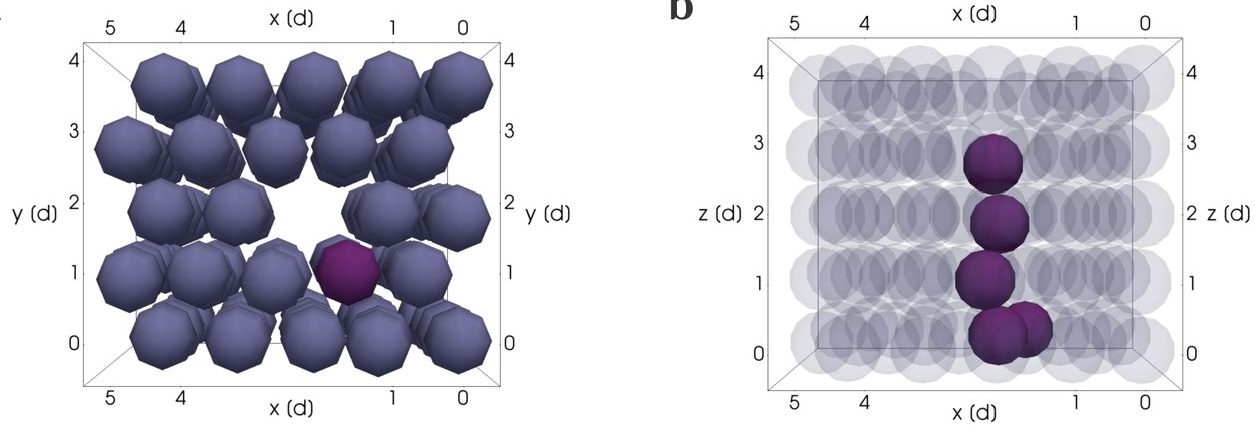
Contributions of cell behavior to geometric order in embryonic cartilage
Sonja Mathias, Igor Adameyko, Andreas Hellander, Jochen Kursawe
A lack of distinct cell identities in single-cell measurements: revisiting Waddington’s landscape
Breanne Sparta, Timothy Hamilton, Serena Hughes, Eric J. Deeds
A predicted developmental and evolutionary morphospace for grapevine leaves
Daniel H. Chitwood, Joey Mullins
Effective mechanical potential of cell–cell interaction explains basic structures of three-dimensional morphogenesis
Hiroshi Koyama, Hisashi Okumura, Atsushi M. Ito, Tetsuhisa Otani, Kazuyuki Nakamura, Kagayaki Kato, Toshihiko Fujimori
Study and Modeling of Biological Noise-Filtering Properties of Conserved Gene Regulatory Networks Motifs in Animal Development
Lina M. Ruiz G., Machado R Gloria, Boris A. Rodriguez R
The impact of phenotypic heterogeneity on chemotactic self-organisation
Fiona R Macfarlane, Tommaso Lorenzi, Kevin J Painter
A local continuum model of cell-cell adhesion
Carles Falcó, Ruth E. Baker, José A. Carrillo
Use of the Catastrophe Model to Preliminarily Explore the Principles of Multicellular Organization
Zheming Cao, Weidong Ding , Jun Qiang , Meiyao Wang , Haojun Zhu
Review
Mechanobiology of Collective Cell Migration in 3D Microenvironments
Alex M. Hruska, Haiqian Yang, Susan E. Leggett, Ming Guo, Ian Y. Wong
Tools & Resources
Rapid and robust directed differentiation of mouse epiblast stem cells into definitive endoderm and forebrain organoids
Daniel Medina-Cano, Emily K. Corrigan, Rachel A. Glenn, Mohammed T. Islam, Yuan Lin, Juliet Kim, Hyunwoo Cho, Thomas Vierbuchen
A Development-Inspired Niche for Homeostatic Human Mini-Intestines
Charlie J. Childs, Emily M. Holloway, Caden W. Sweet, Yu-Hwai Tsai, Angeline Wu, Joshua H. Wu, Oscar Pellón Cardenas, Meghan M. Capeling, Madeline Eiken, Rachel Zwick, Brisa Palikuqi, Coralie Trentesaux, Charles Zhang, Ian Glass, Claudia Loebel, Qianhui Yu, J. Gray Camp, Jonathan Z. Sexton, Ophir Klein, Michael P. Verzi, Jason R. Spence
Cdh5-lineage independent origin of dermal lymphatic vessels revealed by temporally restricted lineage tracing
Yan Zhang, Henrik Ortsäter, Ines Martinez-Corral, Taija Mäkinen
An atlas of spider development at single-cell resolution provides new insights into arthropod embryogenesis
Daniel J. Leite, Anna Schönauer, Grace Blakeley, Amber Harper, Helena Garcia-Castro, Luis Baudouin-Gonzalez, Ruixun Wang, Naïra Sarkis, Alexander Günther Nikola, Ventaka Sai Poojitha Koka, Nathan J. Kenny, Natascha Turetzek, Matthias Pechmann, Jordi Solana, Alistair P. McGregor

Reconstituting human somitogenesis in vitro
Yoshihiro Yamanaka, Kumiko Yoshioka-Kobayashi, Sofiane Hamidi, Sirajam Munira, Kazunori Sunadome, Yi Zhang, Yuzuru Kurokawa, Ai Mieda, Jamie L. Thompson, Janet Kerwin, Steven Lisgo, Takuya Yamamoto, Naomi Moris, Alfonso Martinez-Arias, Taro Tsujimura, Cantas Alev
Reconstructing human Brown Fat developmental trajectory in vitro
Jyoti Rao, Jerome Chal, Fabio Marchianò, Chih-Hao Wang, Ziad Al Tanoury, Svetlana Gapon, Yannis Djeffal, Alicia Mayeuf-Louchart, Ian Glass, Elizabeth M. Sefton, Bianca Habermann, Gabrielle Kardon, Fiona M. Watt, Yu-Hua Tseng, Olivier Pourquié
Prime editing in chicken fibroblasts and primordial germ cells
Yuji Atsuta, Katsuya Suzuki, Haruna Yaguchi, Daisuke Saito
Determination of expression profiles for Drosophila ovarian Follicle Stem Cells (FSCs) using single-cell RNA sequencing
Zhi Dong, Lan Pang, Zhiguo Liu, Yifeng Sheng, Xavier Thibault, Amy Reilein, Daniel Kalderon, Jianhua Huang
Generation of functional hepatocytes by forward programming with nuclear receptors
Rute A. Tomaz, Ekaterini D. Zacharis, Fabian Bachinger, Annabelle Wurmser, Daniel Yamamoto, Sandra Petrus-Reurer, Carola M. Morell, Dominika Dziedzicka, Brandon T. Wesley, Imbisaat Geti, Charis-Patricia Segeritz, Miguel Cardoso de Brito, Mariya Chhatriwala, Daniel Ortmann, Kourosh Saeb-Parsy, Ludovic Vallier
New Hydra genomes reveal conserved principles of hydrozoan transcriptional regulation
Jack F. Cazet, Stefan Siebert, Hannah Morris Little, Philip Bertemes, Abby S. Primack, Peter Ladurner, Matthias Achrainer, Mark T. Fredriksen, R. Travis Moreland, Sumeeta Singh, Suiyuan Zhang, Tyra G. Wolfsberg, Christine E. Schnitzler, Andreas D. Baxevanis, Oleg Simakov, Bert Hobmayer, Celina E. Juliano
Generation of functional posterior spinal motor neurons from hPSCs-derived human spinal cord neural progenitor cells
Jax H. Xu, Yao Yao, Fenyong Yao, Jiehui Chen, Meishi Li, Xianfa Yang, Sheng Li, Fangru Lu, Ping Hu, Shuijin He, Guangdun Peng, Naihe Jing
Breathing on Chip: Dynamic flow and stretch tune cellular composition and accelerate mucociliary maturation of airway epithelium in vitro
Janna C. Nawroth, Doris Roth, Annemarie van Schadewijk, Abilash Ravi, Tengku Ibrahim Maulana, Christiana N. Senger, Sander van Riet, Dennis K. Ninaber, Amy M. de Waal, Dorothea Kraft, Pieter S. Hiemstra, Amy L Ryan, Anne M. van der Does
Machine learning-based classification of binary dynamic fluorescence signals reveals muscle stem cell fate transitions in response to pro-regenerative niche factors
Matteo Togninalli, Andrew T.V. Ho, Christopher M. Madl, Colin A. Holbrook, Yu Xin Wang, Klas E.G. Magnusson, Anna Kirillova, Andrew Chang, Helen M. Blau
An improved pipeline for reprogramming human induced pluripotent stem cells with TET1
Makoto Motono, Keiko Hiraki-Kamon, Masayoshi Kamon, Hidenori Kiyosawa, Yoichi Kondo, Hidemasa Kato
Normalizing need not be the norm: count-based math for analyzing single-cell data
Samuel H. Church, Jasmine L. Mah, Günter Wagner, Casey W. Dunn
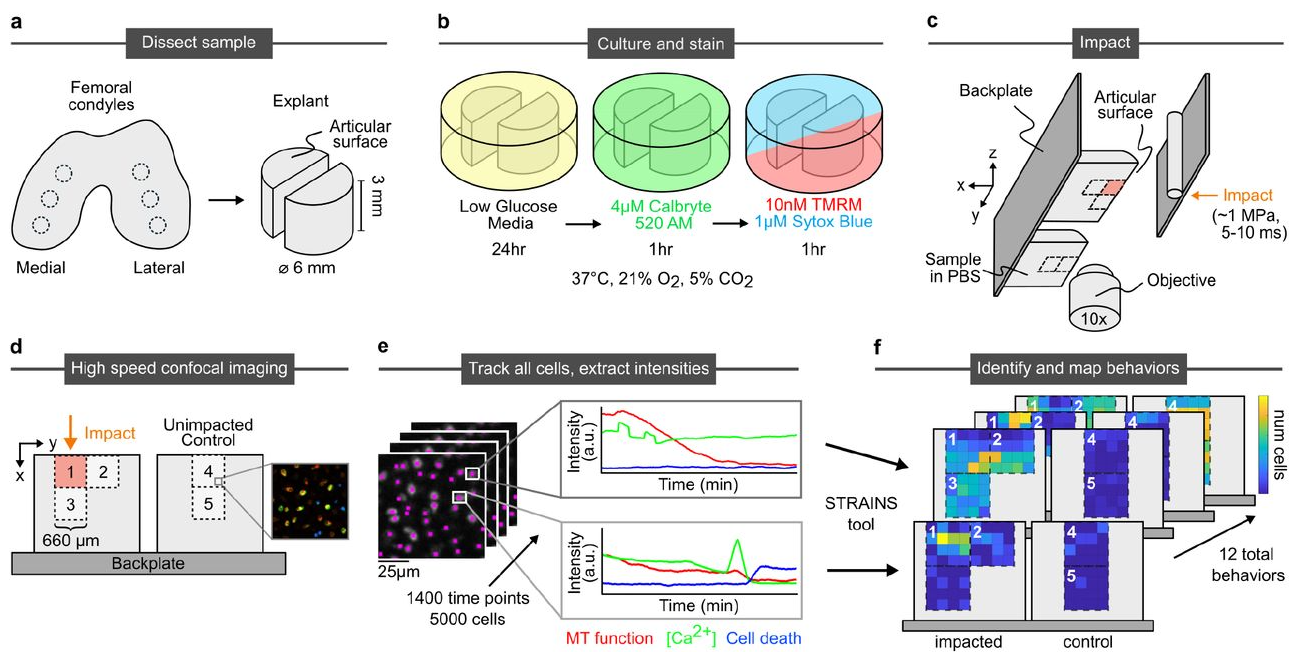
STRAINS: A Big Data Method for Classifying Cellular Response to Stimuli at the Tissue Scale
Jingyang Zheng, Thomas Wyse Jackson, Lisa A. Fortier, Lawrence J. Bonassar, Michelle L. Delco, Itai Cohen
Following cell type transitions in space and time by combining live-cell tracking and endpoint cell identity in intestinal organoids
Xuan Zheng, Max A. Betjes, Yvonne J. Goos, Guizela Huelsz-Prince, Hans Clevers, Jeroen S. van Zon, Sander J. Tans
DeepNEU©: Introducing aiCRISPRL, a hybrid AI stem cell and organoid simulation platform with broad gene editing capabilities and applications
Sally Esmail, Wayne R Danter
Creation and unification of development and life stage ontologies for animals
Anne Niknejad, Christopher J. Mungall, David Osumi-Sutherland, Marc Robinson-Rechavi, Frederic B. Bastian
MorphoSim: An efficient and scalable phase-field framework for accurately simulating multicellular morphologies
Xiangyu Kuang, Guoye Guan, Chao Tang, Lei Zhang
Mechanical regulators of pressure-driven and crawling-based motility of cell collectives
Michael F. Staddon, Michael P. Murrell, Shiladitya Banerjee
Research practice & education
Making Biomedical Research Software FAIR: Actionable Step-by-step Guidelines with a User-support Tool
Bhavesh Patel, Sanjay Soundarajan, Zicheng Hu
Research Productivity and Training Support for Doctoral Students in the Biological and Biomedical Sciences
Michael D. Schaller
Teaching the Skills and Concepts of Gene Expression Analysis during COVID-19
Louis A. Roberts, Scarlet S. Shell
Retractions and rewards in science: An open question for reviewers and funders
Mariana D Ribeiro, M Kalichman, Sonia MR Vasconcelos
I Am A Scientist: Overcoming implicit bias in STEM through explicit representations of diversity in lectures
Dominic Henri, Kirra Coates, Katharine Hubbard
Ten Simple Rules for Using Public Data for Your Research
Vishal Oza , Jordan Whitlock , Elizabeth Wilk , Angelina Uno-Antonison , Brandon Wilk , Manavalan Gajapathy , Timothy Howton , Austyn Trull , Lara Ianov , Elizabeth Worthey , Brittany Lasseigne


 (No Ratings Yet)
(No Ratings Yet)
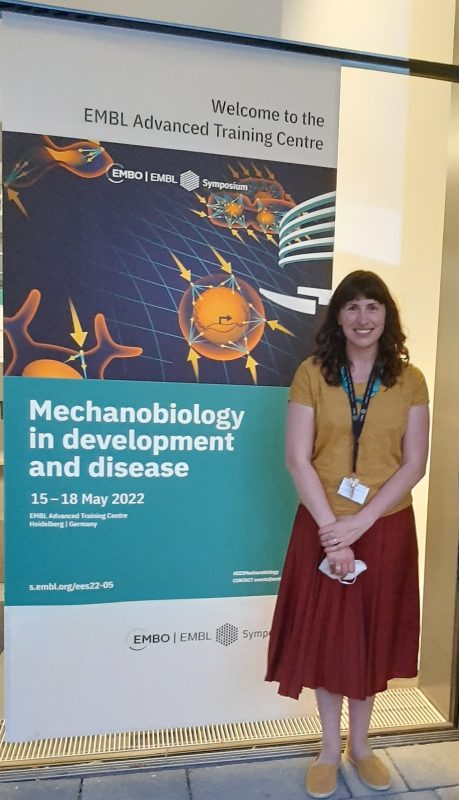
 (7 votes)
(7 votes)
